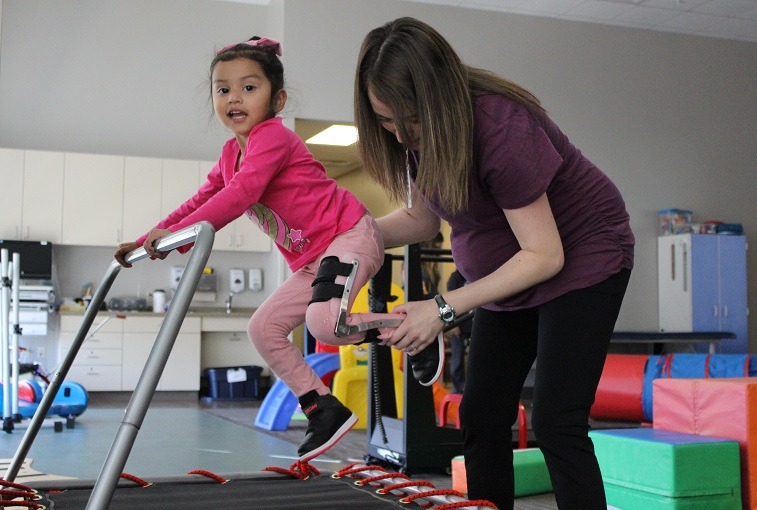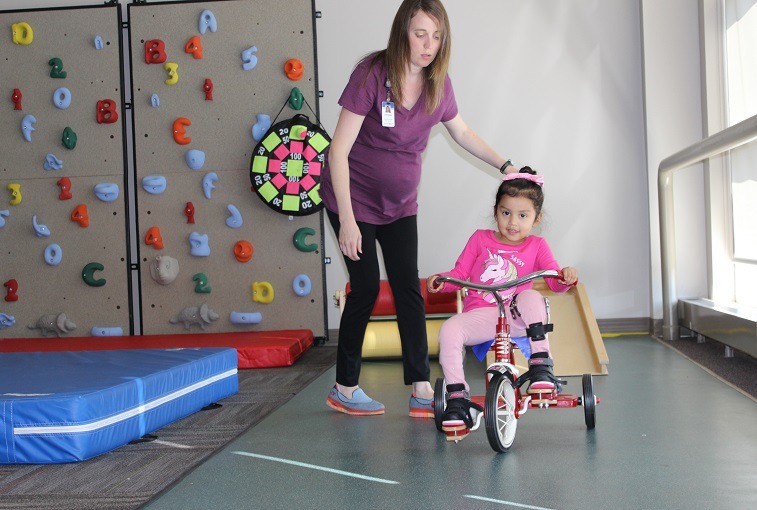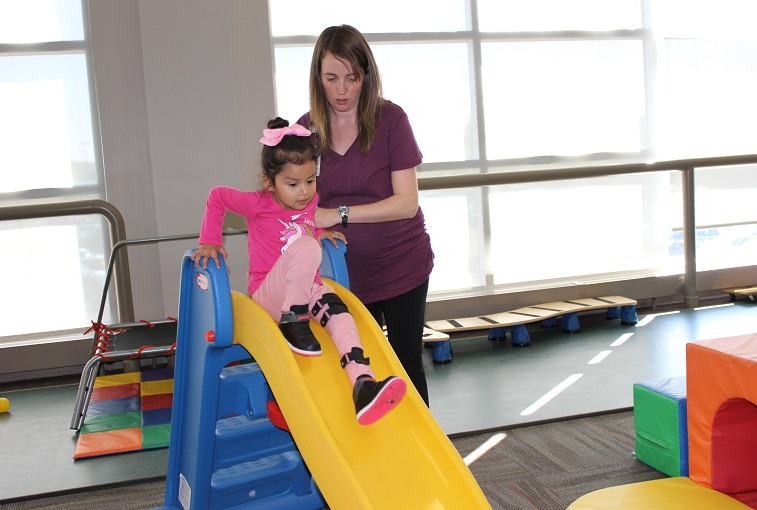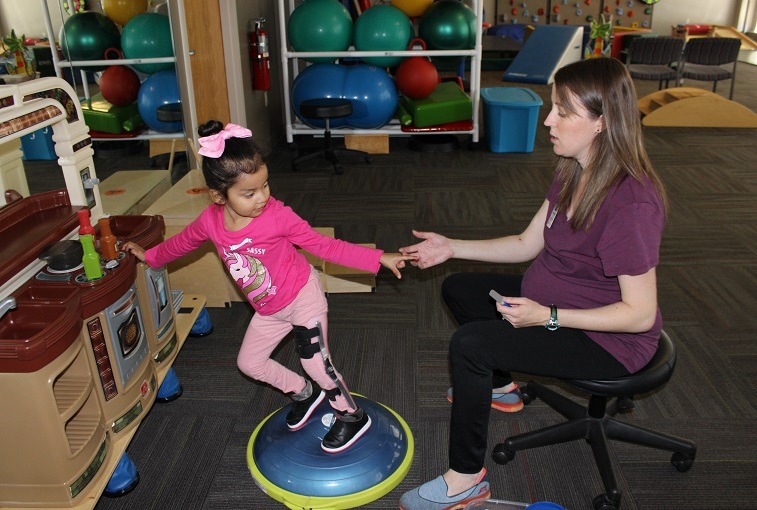When Xochil Cantu was pregnant with her second child, she visited the doctor for her 25-week ultrasound. She’d had a complication-free pregnancy with her first-born boy, Ira, and this second pregnancy had progressed normally.
During the ultrasound, her doctor got a worried look on his face, Xochil had a feeling in her heart that something wasn’t right.
“They started talking to us about spina bifida. That was the first time I’d ever heard that word,” she said. “As soon as I got home, I Googled it, and I just started seeing all of these different situations, and I was just scared.”
Chloe’s first years
On Oct. 31, 2014, Xochil and her husband David welcomed a little girl they named Chloe.
Chloe endured a number of medical interventions in her first years of life: a detethering surgery on her spine, a spinal closure surgery, skin grafts, hip dysplasia. She wears braces on both legs.
Due to her condition, she requires the care of many medical specialists.
A 1,000-mile move
The Cantus knew it would be a challenge when they moved from Oklahoma to North Dakota in September 2017. Aside from the regular hassles of moving, Chloe, then a 2-year-old, would need to get into a new health system –- a task Xochil thought would be difficult.
“I knew doing a big move was going to be a bit hard -– medical-wise -– just because she has to see urologists, neurologists, orthopedic surgeons, orthotists, physical therapy,” she said.
A savvy mother, she did her research ahead of time to make the medical transition more seamless from one state to the next and contacted Sanford Children’s in Fargo.
“Sanford was so awesome. As soon as I called the pediatric clinic, they gave me the information for all of the specialties,” said Xochil. “I was able to even coordinate visits before we got here, so we were able to get her into physical therapy the next week after we moved.”
Coordinating pediatric care
Xochil and David worked with Sanford’s Pediatric Medical Home team to coordinate Chloe’s care. The pediatric medical home program coordinates a patient’s care to make it simpler.
“We work with medically complex children with varying diagnoses,” said Kellee LeNoue, lead social worker with the pediatric medical home team. “We assist the child and family in any way that we can from organizing their care at Sanford, collaborating with outside agencies or just providing support.”
For Xochil, the team was a welcome partner to establish care with a new health system.
“It was just great because it wasn’t just me trying to find all of these places to get her into. They all called me back and made sure I had the right paperwork and the medical authorizations signed in the right places. It was so quick to get her into everywhere. I really liked that,” Xochil said.
“We were able to assist them in coordinating care within Sanford, as well as develop her care plan,” LeNoue said. “The hope is that they don’t need to repeat their story to every new care provider. It’s all there for them to see.”
The pediatric medical home program has helped many patients and their families. It goes beyond just helping coordinate appointments, though.
“We work closely with patients’ physicians to help problem solve or schedule an appointment with their care provider to try avoid the ER, Urgent Care Clinic or ultimately the inpatient unit,” said LeNoue. “We want to keep them at home with their families, as well as keep their medical care organized.”
Accomplishing milestones
When the family arrived in North Dakota, Chloe could only walk with the assistance of a walker. However, through her work with the specialists –- particularly the pediatric physical therapy team –- she has begun walking more independently without her walker.
“She actually exercises versus just moves. When she comes out (of physical therapy), I see that she’s tired, and that’s really been helping her with her standing and walking, so it’s great,” Xochil said. “She actually doesn’t have feeling from her knees down in her legs, so it’s awesome that she can even walk.”
Through her work with the experts at Sanford Children’s, she’s continued to grow and excel.
“She just feels like everyone else, and we treat her like everyone else. She’s no different. She needs a little more help on things, but she’s just like everyone else,” Xochil said. “She likes to run and jump and do anything that she can. She’s so independent. We’ll say, we’re going up the stairs, and she’ll say, ‘I can do it, I can do it!’ She’s so strong. She’s the strongest person I know.”
…
Posted In Children's, Health Information



